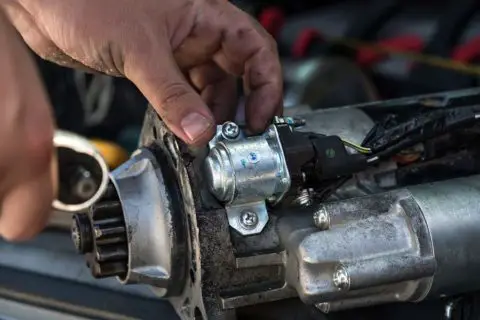Every driver has experienced the gut-wrenching concern of a car that refuses to start, leaving you stranded and searching for answers. As an owner, the first instinct is often to suspect the battery—after all, it’s the heart that powers the entire electrical system. But what if the issue lies deeper? What if, instead, it’s the starter to blame? Let’s traverse this labyrinth of automotive knowledge to uncover the truth: Can a bad starter truly drain your car battery?
To understand the relationship between a failing starter and battery drain, we must first examine the role of the starter itself. The starter is essentially an electric motor that sets the engine in motion. When you turn the ignition key (or press the start button), electrical energy from the battery is transported to the starter, enabling it to crank the engine. This makes it the key player in the vehicle’s starting system. However, it’s not always the protagonist in the dramatic tale of battery woes.
When the starter malfunctions, the drama intensifies. A faulty starter may continuously draw power from the battery without cranking the engine, edging the battery closer to depletion. This situation can leave drivers scratching their heads, pondering why their battery is draining at an alarming rate. It’s an alarming paradox: a component designed to kick-start your car could inadvertently be causing the very power drain you’re trying to mitigate. But how does this happen?
Think of the starter as an actor in a theatrical play. If this actor is incapable or unwilling to perform, it may still attempt to stay in character while delivering a lackluster performance. In real terms, a bad starter can exhibit symptoms such as grinding noises, a clicking sound when turning the key, or a sluggish response. If it tries to engage but falls short, it can result in a drawn-out power drain. Each failed attempt to start draws electricity and keeps the battery working overtime. This consistent draw will, without a doubt, sap the energy reserves of the battery.
But bad starters aren’t the only culprits. It’s crucial to consider all the interconnected systems in your vehicle that can also contribute to battery drain. Alternators, for instance, play an equally pernicious role. They are responsible for charging the battery while the engine is running. If the alternator is on the fritz, your battery may never get the proper charge it needs, leading to a slow drain that ultimately could be misattributed solely to the starter.
On the other hand, external factors must also be weighed. The modern vehicle is a digital ecosystem. Electronics—ranging from ambient lighting to infotainment systems—can inadvertently draw power when they shouldn’t. For instance, a glove compartment light left on overnight can create issues similar to what a bad starter might initiate. Understanding the full scope of the potential power drain in your vehicle becomes crucial in determining the source of the problem.
Moreover, the age and health of your battery itself cannot be overlooked. Older batteries—especially those over three years—naturally lose their ability to hold a charge. This decay, combined with the demands of a faulty starter or a neglected alternator, can push your vehicle’s electrical system into chaos. Think of it as a delicate balance—too many draws lead to disarray, and identifying the cause becomes imperative.
So, what’s a car owner to do? If your trusty steed is showing symptoms resembling those of a dead battery, it’s time to engage in a little investigative task. Begin with the simplest solutions: ensure that battery connections are clean, tight, and devoid of corrosion. A visual inspection can also lend insight. Look for any exposed wiring or frayed cables near the starter that may be causing unintentional draws.
If all appears well in the realm of wiring, it may be time to test the components themselves. Start with the battery. A comprehensive load test can provide insight into its health, while a multimeter can help diagnose alternator issues. Next, examine the starter—many auto parts stores will perform starter tests free of charge. Detection equipment can assess whether the starter is drawing excessive power without cranking and reveal underlying circuitry issues that may not be visible to the naked eye.
Once you’ve identified the cause of the battery drain, the next steps are crucial for restoration and prevention. For a bad starter, replacement is often your best bet. Upgrading to a high-quality, reliable starter not only ensures smooth functionality but also contributes positively to your vehicle’s longevity. Additionally, regular maintenance checks can prevent such issues from surfacing in the future. Keeping an eye on the alternator, charger, and battery health becomes paramount in maintaining automotive harmony.
To summarize, while a bad starter can indeed act as a primary antagonist in the narrative of battery drainage, it is essential to consider it as part of a larger ensemble cast. A multitude of factors—ranging from age and condition to other ailing components—collaborate to affect the health of your vehicle. Maintaining a sharp focus on the overall electrical system, coupled with periodic inspections and proactive care, can ensure your car remains a reliable partner in your journeys. Embrace this new perspective, and you may just save yourself from that heart-stopping moment of a vehicle that won’t start.
